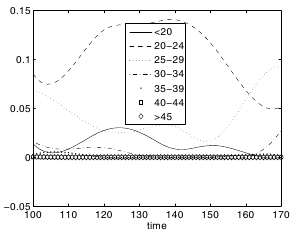An agent-based simulation model of age-at-marriage norms
Belinda Aparicio Diaz and Thomas Fent
Agent-Based Computational Modelling: Applications in Demography, Social, Economic and Environmental Sciences (2006)
Abstract
In this Chap. we analyse an agent - based model designed to understand the dynamics of the intergenerational transmission of age - at - marriage norms. A norm in this context is an acceptable age interval to get married. We assume that this age - interval is defined at the individual level and the individuals’ age - at - marriage norms are transmitted from parents to their children. We compare four different transmission mechanisms to investigate the long term persistence or disappearance of norms under different regimes of transmission. Our work is an extension of [4] that introduces a one - sex non - overlapping - generations version of an age - at - marriage model. Here we investigate whether their results also hold in a more complex setup. Therefore, we explicitly take into account heterogeneity with respect to age and sex. Moreover, we also include the timing of union formation and fertility into our model. To create a more realistic model of the evolution of age norms the characteristics of the agents are extended, some new parameters are added to the model and the age - at - marriage norms are split into two sex - specific age - at - marriage norms. A comparison of the results with those of the original model gives information about how additional characteristics and new parameters can influence the evolution of age - at - marriage norms.

